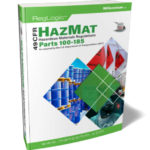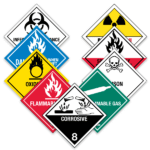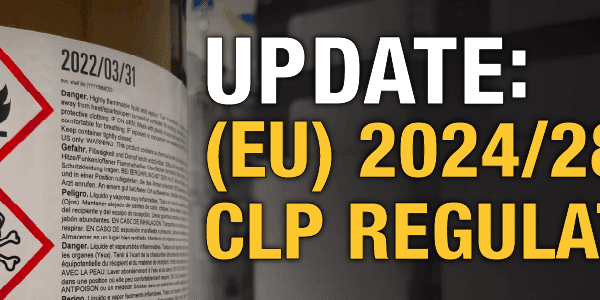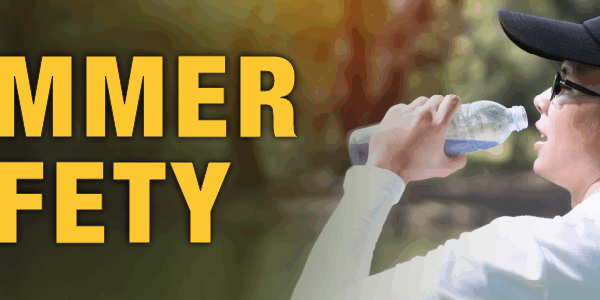
PHMSA FAQ’s: Incident Reporting
PHMSA’s initiative to improve the value of the Online Code of Federal Regulations (oCFR) continues.
In March 2022, a notice was published advising stakeholders that PHMSA intended to “facilitate a better public understanding and awareness of the hazardous materials regulations”, by creating FAQ from letters of interpretation that had been received through the years.
The latest set of FAQs involves Reporting and Notification in case of an incident. Reporting under the 49CFR regulations involves a telephone report, followed by a written report using the DOT form F5800.1 within 30 days of the incident. Apparently, there have been more than fifty requests for interpretations over the years.
Here are the questions and answers:
Who is responsible for completing and submitting a detailed hazardous materials incident report?
Answer: As specified in § 171.16(a), each person in physical possession of a hazardous material when an incident occurs must file a Hazardous Materials Incident Report on DOT Form F 5800.1 to the Department. See § 171.16(b) for information on providing and retaining copies of the incident report, details of where to obtain the forms, and where to file the forms.
How long do I have to submit a written incident report?
Answer: In accordance with § 171.16(a), a person must submit a detailed incident report within 30 days of discovery of the incident to the Department.
Who is responsible for providing immediate notice by telephone if an incident occurs that meets the criteria in § 171.15(b)?
Answer: As specified in § 171.15(a), each person in physical possession of a hazardous material, when an incident occurs, must provide notice by telephone to the National Response Center (NRC) at 1–800–424–8802 (toll-free) or 1–202–267–2675 (toll call). Any person who performs or is contractually responsible to perform any of the HMR functions is legally responsible under the regulations for their proper performance.
How long do I have to provide notice by telephone to the National Response Center (NRC) when an incident occurs that meets the criteria in § 171.15(b)?
Answer: In accordance with § 171.15(a), a person must provide notice by telephone as soon as practical but no later than 12 hours after the occurrence of any incident described in § 171.15(b). Any reporting delay beyond what is necessary to safely secure the scene of the incident is not permitted.
If an incident occurs resulting in the closure of an access road (i.e., on-ramp, off-ramp, jug-handle, or slip-road) to a major highway, is the closure of the access road leading to a highway considered a “road closure” and subject to the hazmat reporting requirements in § 171.15?
Answer: The answer is yes. Components of a highway, such as access roads and interchange areas that provide access to highways—including interstate highways—are considered components of a “major transportation artery or facility,” and are thus subject to the requirements in § 171.15(b)(1)(iv).
Is an incident report required if, during the loading/unloading operation, the consignee discovers or observes a leak from a cargo tank motor vehicle (CTMV) or other bulk packaging?
Answer: If an incident occurs while the carrier that delivered the hazardous material is observing or participating in the unloading operation, the incident must be reported because the carrier is deemed to be in possession of the hazardous material at that point— i.e., the incident occurred during transportation. For these incidents, the carrier transporting the CTMV, or other bulk packaging must complete a DOT Form F 5800.1 hazardous materials incident report.
However, if an incident occurs or is discovered while a consignee is unloading a hazardous material from a transport vehicle or emptying a bulk packaging after the carrier has delivered the material and left the premises, the incident is not required to be reported because the incident occurs or is discovered after transportation has ended. As such, the consignee is not required to file a DOT Form F 5800.1 report for an undeclared shipment or a damaged or leaking shipment that is discovered after the carrier has delivered the hazardous material. Please note that it is possible that a release of this nature is subject to local, state, or federal reporting requirements. We suggest you contact the U.S. Environmental Protection Agency (EPA) at 1–800–424–9346. Additionally, if a person is injured or killed Occupational Safety & Health Administration (OSHA) reporting may be required—OSHA’s 24-hour hotline is 1–800–321–6742. See 29 CFR 1904.39 for requirements specific to reporting fatalities, hospitalizations, amputations, and losses of an eye as a result of work-related incidents to OSHA.
Under § 171.16, a hazardous materials incident report (DOT Form F 5800.1) must be filed when an undeclared hazardous material is discovered. What is an “undeclared hazardous material”?
Answer: As defined in § 171.8, an undeclared hazardous material is a hazardous material that is subject to any hazardous communication requirements and is offered for transportation in commerce without any visible indication to the person accepting the hazardous material for transportation that a hazardous material is present. Additionally, undeclared hazardous materials provide no indication on either an accompanying shipping document, or the outside of a transport vehicle, freight container, or package to the person accepting the hazardous material for transportation that a hazardous material is present.
What information is required on the incident report form for an undeclared shipment?
Answer: The nature of an undeclared shipment is such that complete information about the shipment may not be known at the time of discovery. If the undeclared shipment is discovered because the material was released from the package during transportation, then the information in Part II and Part III of the incident report should be completed to the extent that specific information is known. Similarly, Parts IV and V of the report concerning the consequences of the incident should also be completed. If the undeclared shipment is discovered and no material was released from the package, then the person filing the report should provide as much information as possible, including the carrier information in item 10 of Part II, the shipper/offeror information in item 11 of Part II, and the shipment origin and destination information in items 12 and 13 of Part II. For all reports related to undeclared shipments, the events that led to the discovery of the undeclared shipment should be included in Part VI of the report. Finally, for all reports related to undeclared shipments, Part VIII should be completed to provide contact information. For information that is not known at the time the undeclared shipment is discovered, an indication on the report that the information is not known is acceptable.
Is immediate notification to the National Response Center (NRC) required if a package of radioactive material is damaged during transportation but the radioactive material itself has not been released from its inner packaging—which provides shielding—and the damage does not result in radioactive contamination or excessive radiation exposure?
Answer: The answer is yes. Under § 171.15, if a radioactive material package is broken, even if the inner packaging remains intact, an immediate notification to the NRC is required. See also About Incident Reporting (June 25, 2019), available at: https://www.phmsa.dot.gov/hazmat-program-management-data-and-statistics/data-operations/incident-reporting.
Must the person who files an incident report keep a copy of the incident report?
Answer: The answer is yes. A copy, written or electronic, of the incident report must be available within 24 hours of a request for the report by an authorized representative or special agent of the Department of Transportation (DOT) and must be retained for two years. See § 171.16(b)(3) for requirements specific to retention of an incident report.
Where must I keep a copy of an incident report after I file it with PHMSA?
Answer: The report must be accessible through your company’s principal place of business or, if maintained elsewhere, be made available at your principal place of business within 24 hours of a request for the report if maintained at other than the reporting person’s principal place of business. See § 171.16(b)(3) for requirements specific to retention of an incident report.
Where can a filer get a copy of the DOT Form F 5800.1?
Answer: Electronic copies are available at: https://www.phmsa.dot.gov/hazmat-program-development/data-operations/incident-report-form. In addition, the Guide for preparing HazMat Incidents Reports is available at: https://www.phmsa.dot.gov/sites/phmsa.dot.gov/files/docs/reporting_instructions_rev.pdf
How much hazardous materials may be unintentionally released during the hookup and breakdown of loading and unloading hoses before a person would be required to submit a Hazardous Materials Incident Report on DOT Form F 5800.1?
Answer: There are exceptions to release reporting, provided the incident is not otherwise subject to immediate telephone notification pursuant to § 171.15. For example, as provided in § 171.16(d)(1), the incident reporting requirements do not apply to a release of a minimal amount of hazardous materials from: (1) a vent, for materials for which venting is authorized; (2) the routine operation of a seal, pump, compressor, or valve; or (3) the connection or disconnection of loading or unloading lines, provided that the release does not result in property damage.
Is a carrier required to file an incident report in accordance with § 171.16 for a release from a motor vehicle fuel tank or from a motor vehicle’s hydraulic, cooling, or lubrication systems?
Answer: The answer is no. The HMR governs the transportation of hazardous materials in commerce. Fluids in a motor vehicle’s fuel tank, hydraulic, cooling, and lubrication system are not “transported in commerce.” See § 171.1 pertaining to applicability of the HMR; see also 49 U.S.C. 5101 et seq. Therefore, the reporting requirements in §§ 171.15 and 171.16 do not apply. Please note that it is possible that a release of this nature is subject to local, state, or federal reporting requirements. We suggest you contact the U.S. Environmental Protection Agency (EPA) at 1–800–424–9346.
Is an incident report required if a box, drum, or similar packaging is discovered to be leaking after the shipment is delivered to the consignee?
Answer: Incidents that are discovered after transportation— i.e., any movement of hazardous materials by any mode, and any loading, unloading, or storage incidental thereto—have ended, are not subject to the incident reporting requirements under the HMR. See § 171.1(c) for provisions pertaining to transportation functions.
Is immediate notice required under § 171.15 for an incident that leads to a “road closure” when no hazardous material is released as a result of the incident?
Answer: The answer is yes. Regardless of whether a hazardous material is actually released, if a major transportation artery or facility is closed or shut down for one hour or more, the incident must be reported in accordance with § 171.15. In addition, under § 171.16(a)(1), any time immediate notice is required under § 171.15(b), a written report is also required within 30 days of the discovery of an incident.
When an incident occurs involving a package of hazardous material containing only a residue of hazardous material, as described in § 173.29, is an incident report required?
Answer: A package containing only a residue of hazardous material is not excepted from incident reporting. See 173.29(a). Section 171.16(d) provides exceptions from incident reporting, which include some scenarios that could apply to a packaging containing only a residue. However, there are no specific provisions that apply to empty packagings containing a residue of a hazardous material. There are scenarios where an incident report must be filed, such as when a Packing Group (PG) II hazardous material released from a drum containing only residue of the hazardous material.
A discovery of a hazardous materials incident is made after transportation has ended. May the consignee file an incident report?
Answer: The answer is yes. A person may file an incident report for a hazardous material release or incident—even when not required—if any of the circumstances set forth in § 171.15(b) or § 171.16(a).
For more information on this subject see the Federal Register.
We have our own library of FAQ’s which address many common and not so common questions regarding handling, storing or shipping hazardous materials. As always, our team of experts is just a call away for our customers at 855.734.5469 or send us an email, we’re happy to help.
Stay up to date and sign up for our newsletter!
We have all the products, services and training you need to ensure your staff is properly trained and informed.
 Lithium Battery Shipping Kit Lithium Battery Shipping Kit |








 ICC USA
ICC USA ICC Canada
ICC Canada